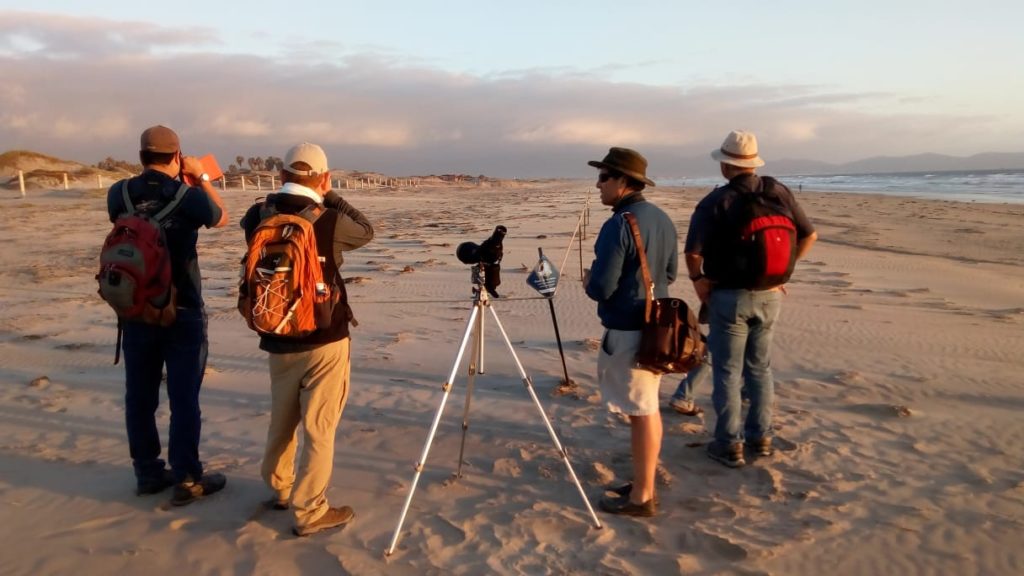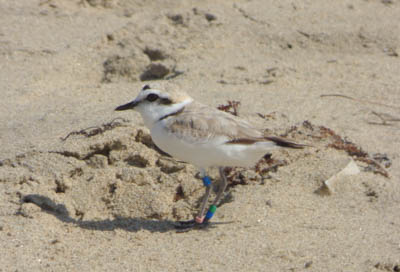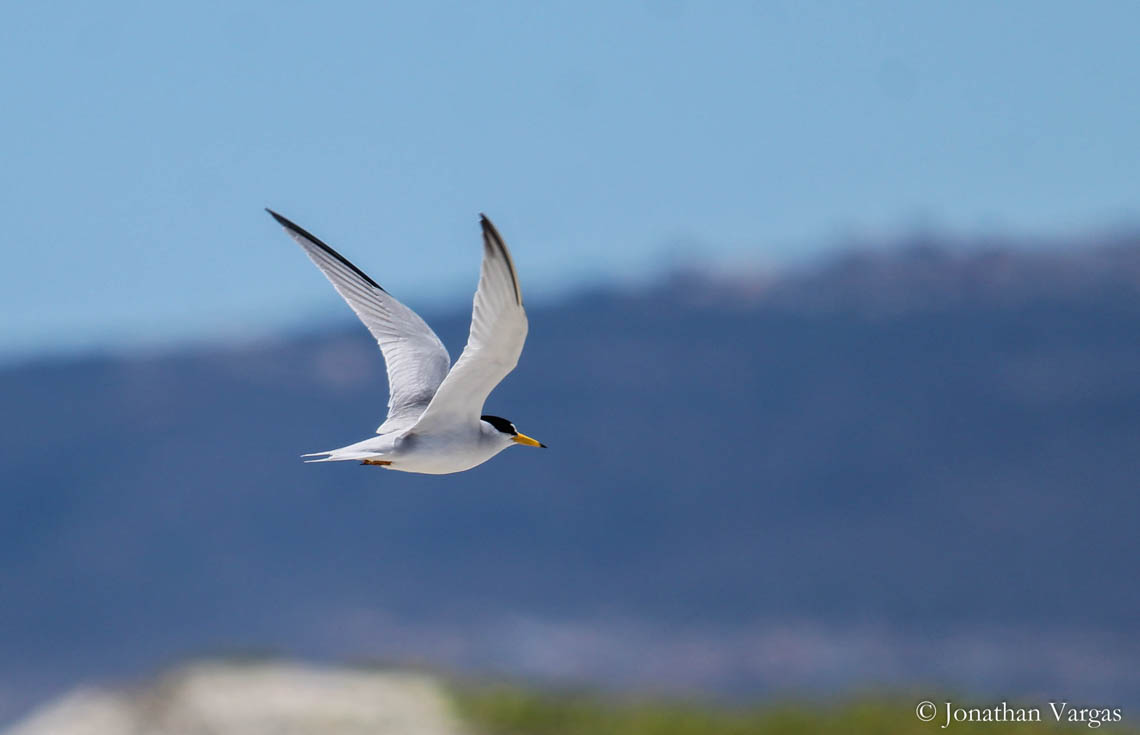By Hans Sin, California Department of Fish and Wildlife, Jonathan Vargas and Cesar Guerrero, Terra Peninsular
Both the California Least Tern (terns) and Western Snowy Plover (plovers) generally nest in coastal dune habitat along the Pacific Coast of the United States into Mexico. Coastal dune ecosystems are constantly forming and eroding, driven by wind and oceanic conditions that has resulted in unique ecosystem processes with specialized plants, invertebrates, and wildlife taxa. In the face of climate change, recreational use, invasive species and development, the coastal dune systems continue to decline in both quality and quantity.

With coastal dune habitat on the downward trend, California Least Tern are federally listed as endangered in the U.S. and a special protection species in Mexico. Western Snowy Plover are federally listed as threatened in both the United States and Mexico. Among other threats, their population declines are correlated with habitat loss, like so many other vulnerable species.
Terns and plovers have large, respective recovery working groups in the U.S. protecting nesting sites through actions such as habitat management, predator control, restricting site access and education and outreach. However, knowledge about terns and plovers in Mexico and protection efforts were more limited. Until recently, a critical knowledge gap was the extent of terns’ and plovers’ ranges and their colony sizes along the Baja California Peninsula. The coast of California is 840 miles (1352 km), and the coast of the Baja California Peninsula, which includes the Mexican States of Baja California and Baja California Sur, is 760 miles (1220 km) to give some perspective of the extent of the geography.
But recent collaborative efforts through organizations such as the Sonoran Joint Venture, U.S. and Mexican non-profit groups, passionate individuals, and federal and state governments on both sides of the border have shown that these knowledge gaps are being bridged and filled with increased information exchange. Traditional monitoring efforts for avian species using banding data have further demonstrated that terns and plovers move along the coastline despite political boundaries.

With improved communication and increased partnerships, a natural result are collaborative projects. In 2019, the California Department of Fish and Wildlife collaborated with Terra Peninsular, a Mexican non-profit group, to monitor, protect nests with symbolic fencing, and conduct education and outreach for terns and plovers at Punta Banda in Ensenada, Baja California.
In the past, individuals such as Barbara Massey in 1976 and SJV board member Eduardo Palacios in the 1990s, monitored terns and plovers at Punta Banda. There have been many other organizations and individuals that helped in the past or are currently assisting conservation efforts there such as Cornell University, the Commission for Environmental Cooperation, Centro de Investigacion Cientifica y de Educacion Superior de Ensenada (CICESE), Fauna del Noroeste, Manomet, Tom Ryan, Daniel Galindo and Edgar Amador. The work being conducted is part of a Southern Wings project through Arizona Game and Fish as well. Southern Wings, a partnership of U.S. State Fish and Wildlife Agencies, facilitates participation in conservation of migratory birds across their annual life-cycle with projects in over 12 countries.
Similar to the U.S., human use of Punta Banda has changed dramatically over time. Terns and plovers there face recreational users walking through nesting areas, unrestricted vehicular access, and construction of a large condominium on site. They also face a variety of both mammalian and avian predators. Because of these threats, the breeding population of plovers in Ensenada was considered extirpated in 2008.

Thanks to the monitoring and conservation measures by Terra Peninsular and other groups such as Pro Esteros, plovers began to nest again. The breeding population of both species has increased in recent years, with an influx of birds banded in the Unites States being re-sighted in Mexico. Terra Peninsular has also implemented successful outreach campaigns with the media, the owners of the condominium, and the public. Through protection efforts including symbolic fencing, plovers and terns are on track for nesting this season.
Terra Peninsular has taken a very strong role at Punta Banda with cooperation from the State of Baja California, development organizations, other conservation groups and the public. They have a well thought out, proven outreach model that can affect the habitat by connecting with people, being clear and transparent in communication, and coordinating social events in conjunction with media releases on television news, radio and social media. Their work is commendable, and the model will continue in this field season and beyond. These efforts not only protect coastal dune systems, but overlapping habitat types in both the U.S. and Mexico for coastal sage scrub, grassland, and riparian habitats with species that do not know human constructed political boundaries.
There is much to be shared and learned by both countries, whether it is the education and outreach models from Mexico, or habitat management and predator control from the U.S. We hope that this story will continue in fruition for recovery of terns, plovers, and other associated species across the ecological and cultural landscape in celebration of biodiversity and cultural richness.

